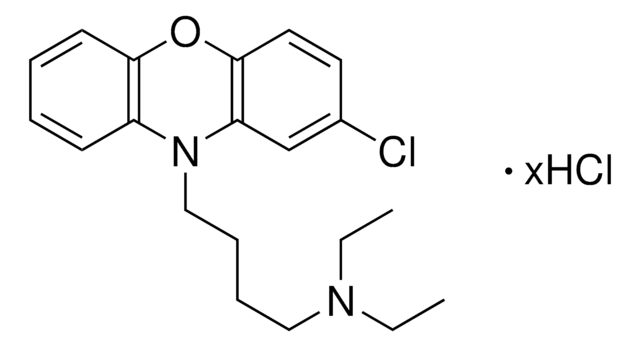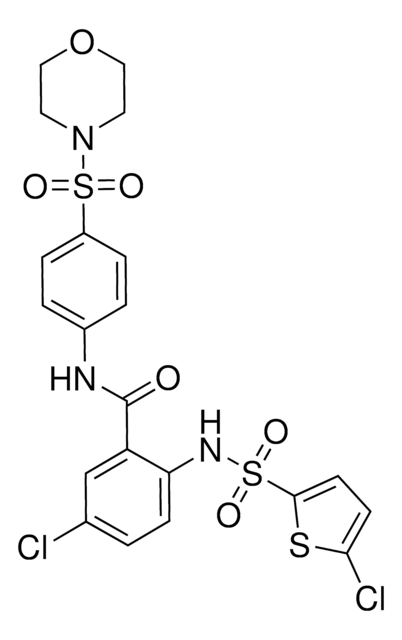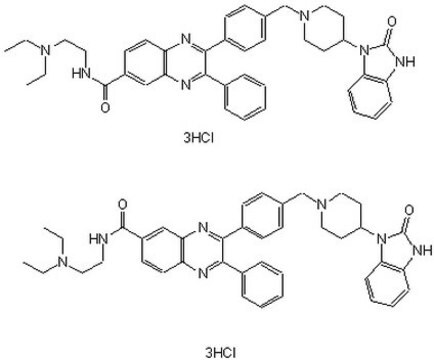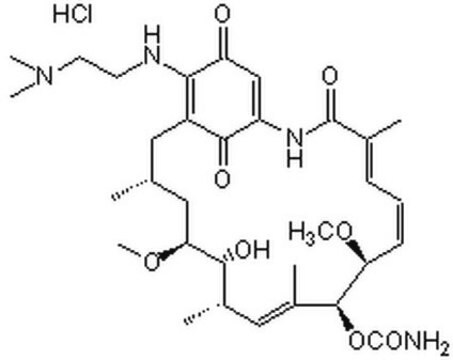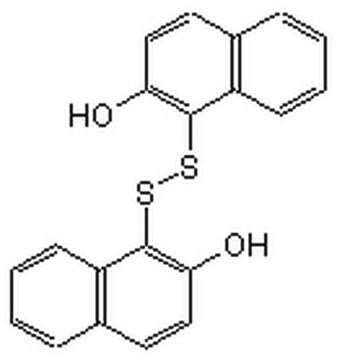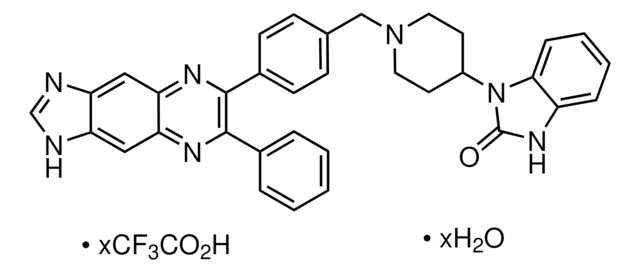124020
Inhibitor Akt X
The Akt Inhibitor X, also referenced under CAS 925681-41-0, controls the biological activity of Akt. This small molecule/inhibitor is primarily used for Phosphorylation & Dephosphorylation applications.
Synonim(y):
10-(4ʹ-(N-dietyloamino)butylo)-2-chlorofenoksazyna, HCl, 10-NCP
About This Item
Polecane produkty
Poziom jakości
Próba
≥95% (HPLC)
Formularz
solid
producent / nazwa handlowa
Calbiochem®
warunki przechowywania
OK to freeze
desiccated (hygroscopic)
protect from light
kolor
white
rozpuszczalność
water: 1 mg/mL
Warunki transportu
ambient
temp. przechowywania
2-8°C
ciąg SMILES
[Cl-].Clc1cc2c(cc1)Oc3c(cccc3)N2CCCC[N+H](CC)CC
InChI
1S/C20H25ClN2O.ClH/c1-3-22(4-2)13-7-8-14-23-17-9-5-6-10-19(17)24-20-12-11-16(21)15-18(20)23;/h5-6,9-12,15H,3-4,7-8,13-14H2,1-2H3;1H
Klucz InChI
SVKSJUIYYCQZEC-UHFFFAOYSA-N
Opis ogólny
Działania biochem./fizjol.
Akt
Rn cell lines (IC₅₀ = 2-5 µM)
Opakowanie
Ostrzeżenie
Rekonstytucja
Inne uwagi
Thimmaiah, K.N., et al. 2005. J. Biol. Chem.280, 31924.
Informacje prawne
Kod klasy składowania
11 - Combustible Solids
Klasa zagrożenia wodnego (WGK)
WGK 1
Temperatura zapłonu (°F)
Not applicable
Temperatura zapłonu (°C)
Not applicable
Certyfikaty analizy (CoA)
Poszukaj Certyfikaty analizy (CoA), wpisując numer partii/serii produktów. Numery serii i partii można znaleźć na etykiecie produktu po słowach „seria” lub „partia”.
Masz już ten produkt?
Dokumenty związane z niedawno zakupionymi produktami zostały zamieszczone w Bibliotece dokumentów.
Nasz zespół naukowców ma doświadczenie we wszystkich obszarach badań, w tym w naukach przyrodniczych, materiałoznawstwie, syntezie chemicznej, chromatografii, analityce i wielu innych dziedzinach.
Skontaktuj się z zespołem ds. pomocy technicznej